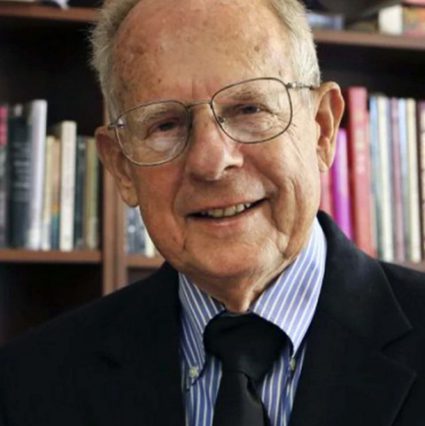Jeremy Stone (Jeremy J. Stone)

In 1963, Jeremy Stone began working on an arms control proposal for preventing anti-ballistic missile (ABM) systems. In 1964-1966 he was a research associate at the Harvard Center for International Affairs (CFIA) where he wrote two books: Containing the Arms Race: Some Specific Proposals (MIT Press, 1966) and Strategic Persuasion: Arms Control Through Dialogue (Columbia University Press, 1967). He taught mathematics and arms control at Pomona College from 1966-68. In June 1970 Stone became the CEO of the Federation of American Scientists (FAS), founded in 1945 by atomic scientists as Federation of Atomic Scientists (FAS). In June 1973, as a consequence of his activism in criticizing Pentagon spending practices, his name appeared as one of the 150 listed on the “enemies” list of President Nixon. During the 30 years of Stone’s stewardship, he and the Federation contributed to policy debates on the nuclear arms race, human rights, ethnic violence and civil conflict, small arms, controlling biological and chemical weapons, energy conservation, global warming, and related subjects. Several of Jeremy Stone’s arms control initiatives bore fruit. According to the 2002 book Unarmed Forces by Matthew Evangelista, the Russians were calling the ABM Treaty “Jeremy Stone’s proposal” as early as 1967. Stone designed and secured Carter Administration approval of a follow-on to SALT II (“Shrink SALT II”) which was proposed in secret by President Carter at the 1979 Vienna Summit. He invented a finesse (the Bear Hug Strategy) that may have helped to make START II possible. And he created an entirely new approach (“No One Decision-Maker”) to the issue of no-first-use of nuclear weapons.
In the 1970s, Jeremy Stone and FAS helped catalyze the opening of scientific exchange with China in 1972. He persuaded the American scientific community to set up human rights committees to defend the rights of Russian scientists and was a leading American advocate for Soviet physicist Andrei Sakharov, who in 1976 described Stone as “creative, articulate and brave.” He was instrumental in stopping an illegal U.S. Government program of mail opening by the CIA. He is credited with having made major contributions to changing U.S. policy on Cambodia at a time when that policy had allied the United States to the genocidal Khmer Rouge. He also waged an effective campaign to have the CIA and the KGB work together on issues of common concern. And he once was assigned, by Carl Sagan, the difficult task of determining whether to warn the East Coast of the United States of a possible impending earthquake. In April 1999, Public Affairs Press published his memoir, “Every Man Should Try”: Adventures of a Public Interest Activist, in which he documented his achievements and failures–including those noted above. (The book was published in Russian in March 2004 with an introduction by Academician Evgeny Velikhov.)
In December 1998, Jeremy Stone led the first American scientific delegation in 20 years to Iran and, in September 1999, hosted the return visit of the Academy of Sciences of Iran. Introducing this delegation to a host of scientific organizations in Washington, including the National Academy of Sciences, led to an agreement to restart the (post-1979 revolution) Iranian-American scientific exchange. Jeremy Stone published his second memoir, “Catalytic Diplomacy: Russia, China, North Korea, and Iran,” in October 2009. Available on Amazon.com, it covers his work from 1999 to 2006. It can be printed out from his foreign policy website www.catalyticdiplomacy.org as can his first life memoir. A 100-page summary of his main achievements on foreign affairs for the half-century from 1962 to 2014 also appears on the Catalytic Diplomacy website under the tab “Life Memoirs Summary”.
Born
- November, 23, 1935
- USA
- New York, New York
Died
- January, 01, 2017
- USA
- Carlsbad, California

